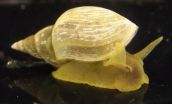(Press-News.org) PHILADELPHIA - Sometimes a full-on assault isn't the best approach when dealing with a powerful enemy. A more effective approach, in the long run, may be to target the support system replenishing the supplies that keep your foe strong and ready for battle. A group of researchers from the Abramson Cancer Center and the Perelman School of Medicine at the University of Pennsylvania is pursuing this strategy by employing a novel DNA vaccine to kill cancer, not by attacking tumor cells, but targeting the blood vessels that keep them alive. The vaccine also indirectly creates an immune response to the tumor itself, amplifying the attack by a phenomenon called epitope spreading. The results of the study were published this month in the Journal of Clinical Investigation.
Previous studies have targeted tumor angiogenesis (the formation of new blood vessels that feed the tumor cells). However, this approach can also interfere with normal processes involved in wound healing and development. Penn researchers avoided this pitfall by designing a DNA vaccine that specifically targets TEM1 (tumor endothelial marker 1), a protein that is overexpressed in tumors and poorly expressed in normal tissues.
"We demonstrated that by targeting TEM1, our vaccine can decrease tumor vascularization, increase hypoxia of the tumor and reduce tumor growth," says Andrea Facciabene, PhD, research assistant professor of Obstetrics and Gynecology and a faculty member in the Ovarian Cancer Research Center at Penn Medicine. "Our results confirm that we were directly targeting the tumor vasculature and also indirectly killing tumor cells through epitope spreading."
The Penn team injected mice with a DNA fusion vaccine called TEM1-TT, created by fusing TEM1 complementary DNA with a fragment of the tetanus toxoid (TT). In mouse models of three cancer types (breast, colon, and cervical), tumor formation was delayed or prevented in mice vaccinated with the TEM1-TT DNA vaccine. Specifically, they found that the mouse tumors had suppressed growth, decreased tumor vessel formation, and increased infiltration of immune cells into tumors.
The researchers found that the DNA vaccine, after killing the endothelial cells that make up the tumor vessels (vasculature), also resulted in epitope spreading, meaning that the immune cells of the mice gathered pieces of dead tumor cells (due to hypoxia) to create a secondary immune response against the tumor itself. The vaccine induced specific T cells to fight other tumor cells expression other proteins, in addition to TEM1, thus increasing its therapeutic efficacy.
The new DNA vaccine approach to fight cancer is showing great potential compared to previous studies that focused on tumor cells rather than the blood vessels that allow tumor cells to thrive.
"Until now there have been a lot of clinical trials using DNA vaccines to target tumors themselves, but unfortunately the results have been disappointing," Facciabene notes. "This is a different approach which should heighten optimism for cancer vaccines in general. Moreover, based on what we've seen in our mouse studies, this vaccine doesn't seem to show any significant side effects."
The prevalence of TEM1 in a wide range of tumor types coupled with its scarcity in normal vessels makes it a suitable target both for a prophylactic defense against cancer and a complement to other therapies such as radiotherapy and chemotherapy. "Using this vaccine simultaneously with radiation may eventually have a double synergy," Facciabene says. "Both treatments affect the tumor endothelium, radiotherapy could help the phenomenon of epitope spreading induced by the TEM1-TT vaccine." In addition to ongoing pre-clinical work with human TEM1, Facciabene and colleagues are planning to move on to Phase I human clinical trials.
The authors suggest that TEM1 may also be an excellent target as a prophylactic cancer vaccine for individuals that have a high risk of developing ovarian cancer, such as carriers of the BRCA1/2 mutations, predominant in breast and ovarian cancer. Research to develop those types of strategies is a key goal of Penn's Basser Research Center for BRCA. As a bonafide vaccine, TEM-TT DNA vaccine generates a memory immune response, which Facciabene says is an ideal attribute for high risk populations.
INFORMATION:
The research was supported by the Basser Research Center for BRCA, the Alliance for Cancer Gene Therapy, the NIH Director's New Innovator Award (1DP2OD008514), and the Pennsylvania Department of Health (4100051725).
Penn Medicine is one of the world's leading academic medical centers, dedicated to the related missions of medical education, biomedical research, and excellence in patient care. Penn Medicine consists of the Raymond and Ruth Perelman School of Medicine at the University of Pennsylvania (founded in 1765 as the nation's first medical school) and the University of Pennsylvania Health System, which together form a $4.3 billion enterprise.
The Perelman School of Medicine has been ranked among the top five medical schools in the United States for the past 17 years, according to U.S. News & World Report's survey of research-oriented medical schools. The School is consistently among the nation's top recipients of funding from the National Institutes of Health, with $392 million awarded in the 2013 fiscal year.
The University of Pennsylvania Health System's patient care facilities include: The Hospital of the University of Pennsylvania -- recognized as one of the nation's top "Honor Roll" hospitals by U.S. News & World Report; Penn Presbyterian Medical Center; Chester County Hospital; Penn Wissahickon Hospice; and Pennsylvania Hospital -- the nation's first hospital, founded in 1751. Additional affiliated inpatient care facilities and services throughout the Philadelphia region include Chestnut Hill Hospital and Good Shepherd Penn Partners, a partnership between Good Shepherd Rehabilitation Network and Penn Medicine.
Penn Medicine is committed to improving lives and health through a variety of community-based programs and activities. In fiscal year 2013, Penn Medicine provided $814 million to benefit our community.
Researchers generate immunity against tumor vessel protein
Promising new approach targets cancer protein to slow tumor growth
2014-04-25
ELSE PRESS RELEASES FROM THIS DATE:
Researchers trace HIV evolution in North America
2014-04-25
A study tracing the evolution of HIV in North America involving researchers at Simon Fraser University has found evidence that the virus is slowly adapting over time to its human hosts. However, this change is so gradual that it is unlikely to have an impact on vaccine design.
"Much research has focused on how HIV adapts to antiviral drugs—we wanted to investigate how HIV adapts to us, its human hosts, over time," says lead author Zabrina Brumme, an assistant professor in SFU's Faculty of Health Sciences.
The study, published today in PLOS Genetics, was led by Brumme's ...
Star is discovered to be a close neighbor of the Sun and the coldest of its kind
2014-04-25
A "brown dwarf" star that appears to be the coldest of its kind -- as frosty as Earth's North Pole -- has been discovered by a Penn State University astronomer using NASA's Wide-field Infrared Survey Explorer (WISE) and Spitzer Space Telescopes. Images from the space telescopes also pinpointed the object's distance at 7.2 light-years away, making it the fourth closest system to our Sun.
"It is very exciting to discover a new neighbor of our solar system that is so close," said Kevin Luhman, an associate professor of astronomy and astrophysics at Penn State and a researcher ...
New genome-editing platform significantly increases accuracy of CRISPR-based systems
2014-04-25
A next-generation genome editing system developed by Massachusetts General Hospital (MGH) investigators substantially decreases the risk of producing unwanted, off-target gene mutations. In a paper receiving online publication in Nature Biotechnology, the researchers report a new CRISPR-based RNA-guided nuclease technology that uses two guide RNAs, significantly reducing the chance of cutting through DNA strands at mismatched sites.
"This system combines the ease of use of the widely adopted CRISPR/Cas system with a dimerization-dependent nuclease activity that confers ...
Scientists at the UA make critical end-stage liver disease discovery
2014-04-25
A team of researchers in the University of Arizona's College of Pharmacy has discovered a molecular pathway that could be key to creating new therapeutics that would slow or even reverse the progression of end-stage liver disease.
Although cirrhosis of the liver is most commonly associated with alcohol or drug abuse, the condition – marked by scar tissue replacing healthy liver tissue – also can result from viral hepatitis, obesity and diabetes, as well as certain inherited diseases. According to the National Institutes of Health, cirrhosis is the 12th leading cause of ...
Biologists discover a key regulator in the pacemakers of our brain and heart
2014-04-25
Biologists have discovered how an outer shield over T-type channels change the electrochemical signaling of heart and brain cells. Understanding how these shields work will help researchers eventually develop a new class of drugs for treating epilepsy, cardiovascular disease and cancer.
The study from the University of Waterloo is published in the Journal of Biological Chemistry today and is featured as the "Paper of the Week" for its significance.
The researchers discovered T-type channels in the pond snail, Lymnaea stagnalis, can shift from using calcium ions to ...
Study finds almost half of homeless men had traumatic brain injury in their life
2014-04-25
TORONTO, April 25, 2014—Almost half of all homeless men who took part in a study by St. Michael's Hospital had suffered at least one traumatic brain injury in their life and 87 per cent of those injuries occurred before the men lost their homes.
While assaults were a major cause of those traumatic brain injuries, or TBIs, (60 per cent) many were caused by potentially non-violent mechanisms such as sports and recreation (44 per cent) and motor vehicle collisions and falls (42 per cent).
The study, led by Dr. Jane Topolovec-Vranic, a clinical researcher in the hospital's ...
Genome regions once mislabeled 'junk' linked to heart failure
2014-04-25
Large sections of the genome that were once referred to as "junk" DNA have been linked to human heart failure, according to research from Washington University School of Medicine in St. Louis.
So-called junk DNA was long thought to have no important role in heredity or disease because it doesn't code for proteins. But emerging research in recent years has revealed that many of these sections of the genome produce RNA molecules that, despite not being proteins, still have important functions in the body. RNA is a close chemical cousin to DNA.
Molecules now associated ...
'Beneficial inflammation' may promote healing in pulmonary fibrosis
2014-04-25
Inflammation has long been considered an integral part of the biological process that leads to deadly scarring in idiopathic pulmonary fibrosis. New research at National Jewish Health, however, suggests that a little inflammation may also be crucial to the healing and repair processes in the lungs. Elizabeth Redente, PhD, assistant professor of cell biology at National Jewish Health, and her colleagues report in the April 2014 issue of the American Journal of Respiratory Cell and Molecular Biology that the pro-inflammatory cytokine TNF-α can speed recovery of injured ...
Buzz and Bite Highlighted In New Malaria Museum
2014-04-25
Chocolate Moose Media's Buzz and Bite public service announcements (PSA) have had a profound effect combatting the spread of malaria around the world. Now the series will be featured in a new museum in Dublin, Ireland, dedicated to malaria.
Buzz and Bite comprises 30 animated spots of either 30 or 60 seconds that feature two female anopheles (malaria-carrying) mosquitos. Creator and company president Firdaus Kharas uses humour as the two winged characters try to infect every human on the planet. The series teaches about the value of insecticide-treated sleeping nets ...
Revolutionary 'metamaterial' has potential to reshape neurosurgery
2014-04-25
Philadelphia, Pa. (April 25, 2014) – The development of graphene—a highly advanced metamaterial with many unique and varied properties—may lead to exciting new applications in the diagnosis and treatment of neurological diseases, according to a report in the May issue of Neurosurgery, official journal of the Congress of Neurological Surgeons. The journal is published by Lippincott Williams & Wilkins, a part of Wolters Kluwer Health.
Tobias A. Mattei, MD, of Invision Health/Brain & Spine Center – Buffalo, New York and Azeem A. Rehman, BS, of The University of Illinois ...
LAST 30 PRESS RELEASES:
Tracing the quick synthesis of an industrially important catalyst
New software sheds light on cancer’s hidden genetic networks
UT Health San Antonio awarded $3 million in CPRIT grants to bolster cancer research and prevention efforts in South Texas
Third symposium spotlights global challenge of new contaminants in China’s fight against pollution
From straw to soil harmony: International team reveals how biochar supercharges carbon-smart farming
Myeloma: How AI is redrawing the map of cancer care
Manhattan E. Charurat, Ph.D., MHS invested as the Homer and Martha Gudelsky Distinguished Professor in Medicine at the University of Maryland School of Medicine
Insilico Medicine’s Pharma.AI Q4 Winter Launch Recap: Revolutionizing drug discovery with cutting-edge AI innovations, accelerating the path to pharmaceutical superintelligence
Nanoplastics have diet-dependent impacts on digestive system health
Brain neuron death occurs throughout life and increases with age, a natural human protein drug may halt neuron death in Alzheimer’s disease
SPIE and CLP announce the recipients of the 2025 Advanced Photonics Young Innovator Award
Lessons from the Caldor Fire’s Christmas Valley ‘Miracle’
Ant societies rose by trading individual protection for collective power
Research reveals how ancient viral DNA shapes early embryonic development
A molecular gatekeeper that controls protein synthesis
New ‘cloaking device’ concept to shield sensitive tech from magnetic fields
Researchers show impact of mountain building and climate change on alpine biodiversity
Study models the transition from Neanderthals to modern humans in Europe
University of Phoenix College of Doctoral Studies releases white paper on AI-driven skilling to reduce burnout and restore worker autonomy
AIs fail at the game of visual “telephone”
The levers for a sustainable food system
Potential changes in US homelessness by ending federal support for housing first programs
Vulnerability of large language models to prompt injection when providing medical advice
Researchers develop new system for high-energy-density, long-life, multi-electron transfer bromine-based flow batteries
Ending federal support for housing first programs could increase U.S. homelessness by 5% in one year, new JAMA study finds
New research uncovers molecular ‘safety switch’ shielding cancers from immune attack
Bacteria resisting viral infection can still sink carbon to ocean floor
Younger biological age may increase depression risk in older women during COVID-19
Bharat Innovates 2026 National Basecamp Showcases India’s Most Promising Deep-Tech Ventures
Here’s what determines whether your income level rises or falls
[Press-News.org] Researchers generate immunity against tumor vessel proteinPromising new approach targets cancer protein to slow tumor growth




